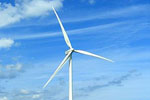Not known for alarmism and sometimes criticized for being too optimistic, the International Energy Agency (IEA) has warned that without bold action in the next five years the world will lock itself into high-emissions energy sources that will push climate change beyond the 2 degrees Celsius considered relatively ‘safe’ by many scientists and officials.
“As each year passes without clear signals to drive investment in clean energy, the ‘lock-in’ of high-carbon infrastructure is making it harder and more expensive to
meet our energy security and climate goals,” says Fatih Birol, IEA Chief Economist.
The IEA has warned that if business-as-usual continues, already existing infrastructure and its dependence on inefficient and dirty energy will provide society with no wiggle-room to stem climate change. Currently, infrastructure already in place or being built already ‘locks in’ 80 percent of future emissions. This of course presupposes that governments will refuse to shut-down high-emissions energy sources even after climate change impacts worsen.
The IEA predicts that carbon-intensive coal could jump 65 percent by 2035, and that oil prices are likely to hit $150 a barrel. On the other side, the agency predicts that by 2035, renewable subsidies will jump by four times hitting $250 billion annually, though this is still well below current fossil fuel subsidies at $409 billion. The organization further warns that moving away from nuclear energy, following the Fukushima disaster, may make it more difficult and expensive to combat climate change.
“Growth, prosperity and rising population will inevitably push up energy needs over the coming decades. But we cannot continue to rely on insecure and environmentally unsustainable uses of energy,” says IEA Executive Director Maria van der Hoeven. “Governments need to introduce stronger measures to drive investment in efficient and low-carbon technologies. The Fukushima nuclear accident, the turmoil in parts of the Middle East and North Africa and a sharp rebound in energy demand in 2010 which pushed CO2 emissions to a record high, highlight the urgency and the scale of the challenge.”
The IEA’s report is in line with recent research. A study in Nature last month found that emissions must peak in less than a decade and than fall quickly thereafter if the world is to have a likely (i.e. 66 percent) chance of avoiding a rise over 2 degrees Celsius.
Despite repeated warnings of this nature, nations have been slow and ambivalent about seriously tackling climate change.
Related articles
Sober up: world running out of time to keep planet from over-heating

(10/24/2011) If governments are to keep the pledge they made in Copenhagen to limit global warming within the ‘safe range’ of two degrees Celsius, they are running out of time, according to two sobering papers from Nature. One of the studies finds that if the world is to have a 66 percent chance of staying below a rise of two degrees Celsius, greenhouse gas emissions would need to peak in less than a decade and fall quickly thereafter. The other study predicts that pats of Europe, Asia, North Africa and Canada could see a rise beyond two degrees Celsius within just twenty years.
Last year’s greenhouse gas emissions topple worst-case scenario
(11/06/2011) Global greenhouse gas emissions last year exceeded worst-case scenario predictions from just four years before, according to the US Department of Energy (DOE). A rise of 6 percent (564 million additional tons) over 2009 levels was largely driven by three nations: the US, India, and China. Emissions from burning coal jumped 8 percent overall. The new data, supported by a similar report from International Energy Agency (IEA), make it even more difficult for nations to make good on a previous pledge to hold back the world from warming over 2 degrees Celsius.
Climate change already worsening weird, deadly, and expensive weather
(11/02/2011) Unprecedented flooding in Thailand, torrential rains pummeling El Salvador, long-term and beyond-extreme drought in Texas, killer snowstorm in the eastern US—and that’s just the last month or so. Extreme weather worldwide appears to be both increasing in frequency and intensity, and a new report from the Intergovernmental Panel on Climate Change (IPCC) connects the dots between wilder weather patterns and global climate change.







